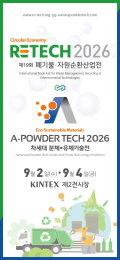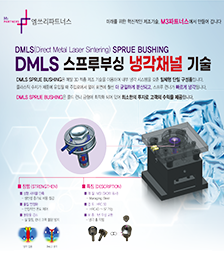Feature
Ocean Cleanup uses plastics to remove plastics, litter, from the Pacific
작성자 : Aeyoung Park
2018-08-10 |
조회 : 5030
- The Ocean Cleanup has successfully tested a free-floating system to collect ocean plastics
The Ocean Cleanup, a nonprofit group trying to tackle plastic pollution with technology, says it has successfully tested a free-floating system to collect marine debris from the Great Pacific Garbage Patch and will deploy it in early September.
The Rotterdam, Netherlands-based group designed a passive system with two main components both made of plastic. There's a long "floater" of flexible high density polyethylene pipe and a polyester woven skirt attached below it.
The system was designed so that the buoyant and flexible HDPE pipe bobs atop the Pacific Ocean to keep garbage from flowing over it, while the drag on the skirt, which is tapered, forms a U-shape that captures plastic floating at or near the surface.
Imagine a giant Pac-Man powered by winds and waves gobbling up the plastic in its path, said Boyan Slat, the 24-year-old founder and CEO of the Ocean Cleanup.
Most marine life is expected to swim underneath the system, which was dubbed Wilson in a nod to the personified volleyball friend of actor Tom Hank's straVnded character in the 2000 movie "Castaway."
The pilot test for Wilson was conducted with 120 meters of Agru XXL pipe and 72 meters of skirt or screen that is 3 meters deep at the center. The system was assembled with clamping brackets in Alameda, Calif., then pulled by boat through San Francisco Bay for 1,200 nautical miles to the trash vortex in the Pacific Ocean, between California and Hawaii.
The largest of the five zones where plastics accumulate, the North Pacific garbage patch is said to be twice the size of Texas and holds 1.8 trillion pieces of plastic that entered the ocean mostly through rivers. That's 250 pieces of plastic for every person on the planet. Fishing nets make up 46 percent of the gyre and 20 percent came from the 2011 tsunami in Japan, according to scientists with the Ocean Cleanup, who also say much of the plastic is rigid PE and polypropylene.
A two-week test of the collection system's durability and hydrodynamics was done in May. Some results were shared on social media in July, including the system withstanding 5-meter waves and forces of the ocean.
"The recently completed tow test was a crucial milestone on the road to deployment of the world's first ocean cleanup system," the Ocean Cleanup said in a Facebook post about the test validating the system's seaworthiness.
Agru commented: "Great to see our XXL pipe in action! It is flexible like a snake and will withstand even the harshest sea conditions."
Produced in Charleston, S.C., by Agru America Inc., XXL pipe is available with outer diameters up to 2,500 millimeters (98.4 inches) and lengths up to 600 meters (1,968 feet) for on- and offshore applications. The pipe can be extruded into Charleston Harbor, and when capped at the ends is buoyant for towing by tugboat to customers around the world for mining jobs and coastal projects like cooling water intakes for power plants and seawater desalination plants.
The Ocean Cleanup envisions a fleet of 60 plastic-culling floaters that are 600 meters long each and equipped with solar power lights, cameras, sensors, anticollision beacons and satellite antennas to communicate their locations and gather performance data, including an alert that the U-shaped center is full. An online summary of primary components says pipe with a 4-foot diameter will be used.
In optimal conditions, every week, 1 metric ton of plastic debris will accumulate in front of the system. Garbage-hauling vessels will arrive periodically to pick up the plastic and take it to land for recycling into products like sunglasses, backpacks, headphones and watches.
The Ocean Cleanup says this full-scale fleet could pick up 50 percent of the Pacific garbage patch every five years. The plastic returned to shore for recycling will be sold to business-to-consumer companies and that money will go toward cleaning up the other gyres in the South Pacific, North and South Atlantic Ocean, and Indian Ocean.
The floater pipes, too, could be recycled after their estimated 20-year service lives.
If the Ocean Cleanup can deploy fleets into every gyre, and if efforts of source reduction continue on land, the group says it should be able to remove 90 percent of ocean plastic by 2040.
▲ This woven polyster screen is an important component of The Ocean Cleanup system.
Attached to the buoyant "floater" of polyethylene pipe, the drag on the tapered screen
forms a U-shape retention area that captures plastic floating at or near the surface.
Creating a 'coastline'
The principle behind Wilson is simple, according to an Ocean Cleanup video: "Create a coastline where there are none, concentrate the plastic and take it out."
Both the debris and the free-floating removal system will be carried around by the currents, automatically drifting to the areas with the highest plastic concentration. But only the pipe-and-screen system is propelled by the waves and wind, giving it an edge on speed over the garbage. The system moves faster than the plastic trash and can capture it.
The tapered screen, which is deeper at the center of the floater than the edges, naturally forms a U-shape that collects debris in the center like a funnel.
In a July 21 update, Slat said, "Although there is a fair chance this won't be the last iteration of our ocean cleanup technology, we have high confidence that it addresses the stability issues and that this will be the design responsible for collecting the first plastic from the Great Pacific garbage patch later this year."
The group's original plan was to moor a 60-mile floating boom to the sea floor and guide plastic to a mechanical extraction system, such as a conveyor belt. The debris would then move to a platform with a storage hull and processing equipment, like a shredder, on a solar-powered deck. Every 45 days or so the debris would be hauled to land and converted into energy or recycled.
However, the group decided against one massive cleanup system fixed to the seabed and switched to the plan of a fleet of smaller free-floating systems.
The screen then became a focus after a prototype of polyester fibers covered by a layer of TPU tore and delaminated. The group changed to a strong polyester fabric in a geotextile-based screen design.
"The fibers of the fabric are grouped in bands, which means the load will always be spread across many fibers, making tear propagation unlikely," Slant explained in a website update earlier this year. "As an added safety feature, the strong-lines themselves act as an additional rip-stop mechanism as well. The upside of this design is that it solves all the failure mechanisms we previously encountered. It is, however, more complicated, requiring many interfaces in the shape of stitches."
The screen will gather plastic fragments just millimeters in size to 10s of meters in size like huge ghost nets.
Then what?
The Ocean Cleanup estimates that a plastic extraction vessel will travel to the floaters every six weeks to collect marine plastics from within the retention system. The area will first be scanned for large fish, sharks and sea turtles with an underwater camera. If a living marine mammal or sea turtle is found entangled in a derelict net or debris, a disentanglement procedure may be initiated depending on safety and weather conditions and the species involved.
The system also may be equipped with pingers to deter marine mammals and green flashing lights to deter sea turtles.
When the area is cleared of marine life, a net will be towed by the main vessel and closed slowly. The catch will be transferred on board to a brailer with fine mesh to collect macro- and microplastics. Any living small fish and other organisms will be manually separated, if possible, documented and released back into the ocean.
The extracted plastic will be deposited in open-top containers with drainage holes and commercial-grade filters to retain microplastics. The plastic will then be shipped to a drop-off point in the San Francisco Bay area, moved to labeled containers and taken to a recycling site, where it will be pretreated to remove biomass and inorganic fractions. Nonplastic debris and plastics not suited for mechanical recycling will be subject to thermal recycling.
The target date for deploying Wilson is Sept. 8.
- Relative Video -




















